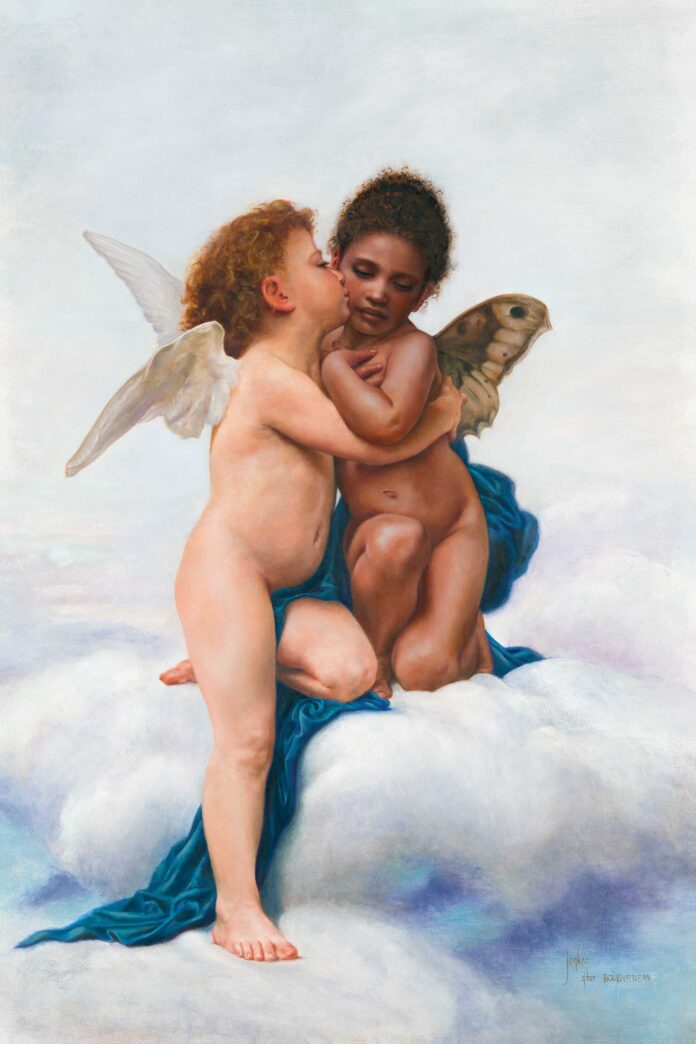
There is a lot of superb contemporary realism being made these days; this article by Allison Malafronte shines light on a gifted individual.
Julianne Jonker (b. 1957) was primed from a young age to become the innovative painter, sculptor, and photographer she is today, as she grew up in a family of jazz musicians and creatives who encouraged experimentation, improvisation, and sensitive interpretation. She pursued both classical and contemporary training — first at the Minnesota River School of Fine Art and then with several professional artists in the U.S. and Europe — and today she combines many different disciplines and styles with her own creativity to best honor the subject she is capturing.
“My intention for my art is to serve as a conduit, a visual language for our ability to see and be seen,” the Minnesota-based artist says. “I hope to impart to the work the same beauty I catch a glimpse of when I view a scene or an individual.”
Currently, Jonker is making her works with encaustic, cold wax, and oil paints. This combination of materials allows her to achieve a sculptural quality, creating depth and texture while providing a soft matte patina. “Combining classical and contemporary styles, I use these materials to capture the nuances of each subject’s likeness,” she says.
“Working in a rhythm layer by layer, wax and oil combined, I build then excavate, create then destroy, using an array of tools to evoke the history and depth that defines the texture of wax paintings.”
Jonker’s current series, Gods and Goddesses, began during the pandemic, when the artist was deep in introspection considering how to bridge the disconnect and invisibility people experienced during that prolonged period of isolation. Within that collection is her reinterpretation of Bouguereau’s masterpiece “Cupid and Psyche” (1889), seen through a new lens of inclusion. “The original painting had two little pink cherubs, probably taken from French models since Bouguereau was French,” the artist explains. “My granddaughters and other little people of color rarely see themselves depicted as cherubs, princesses, heroes, or in this case a butterfly/moth. It’s so important for all children to see their own reflection in the real world around them, as well as in art and media.”
Jonker continues, “I created the little moth/cherub out of my imagination. She represents many ethnicities of brown-skinned little girls. The moth’s symbolic meaning is resurrection and transformation. A moth represents tremendous change, but it also seeks the light. Thus, the spiritual meaning is to trust the changes that are happening, and that freedom and liberation are right around the corner.”
Connect with the artist: www.juliannejonker.com
This article was originally published in Fine Art Connoisseur magazine (subscribe here).
- Become a Realism Today Ambassador for the chance to see your work featured in our newsletter, on our social media, and on this site dedicated to contemporary realism.




